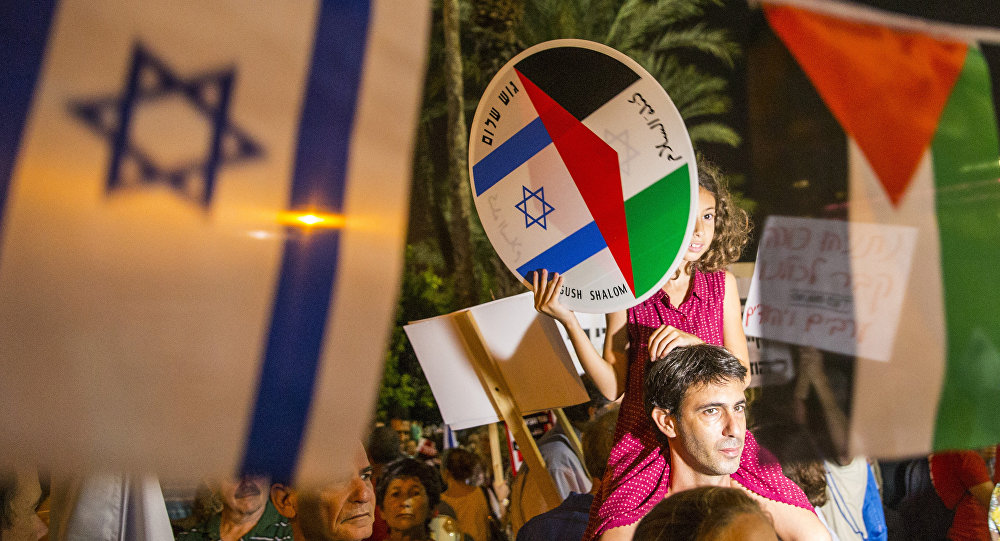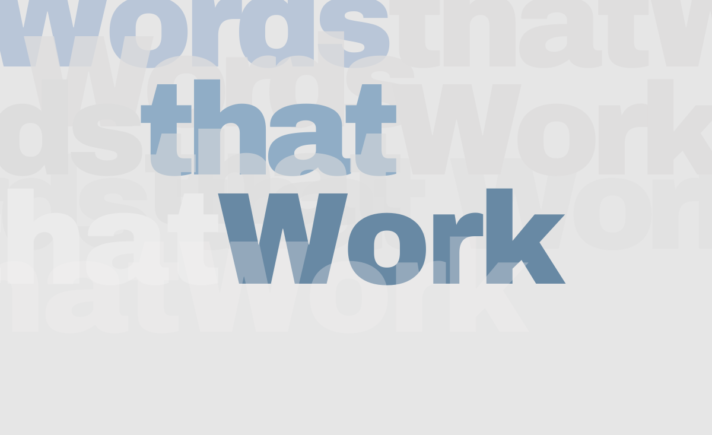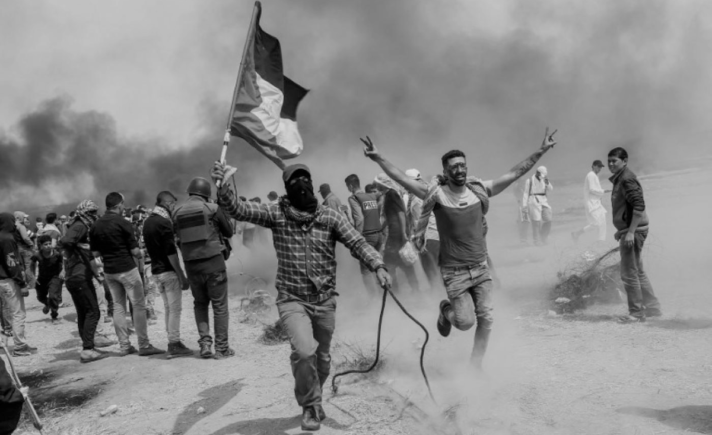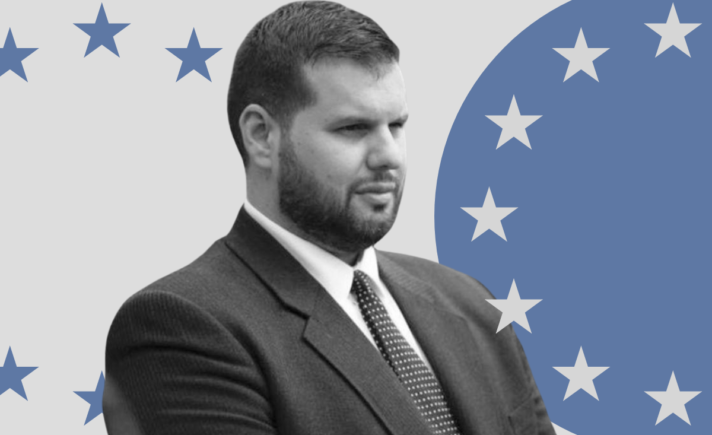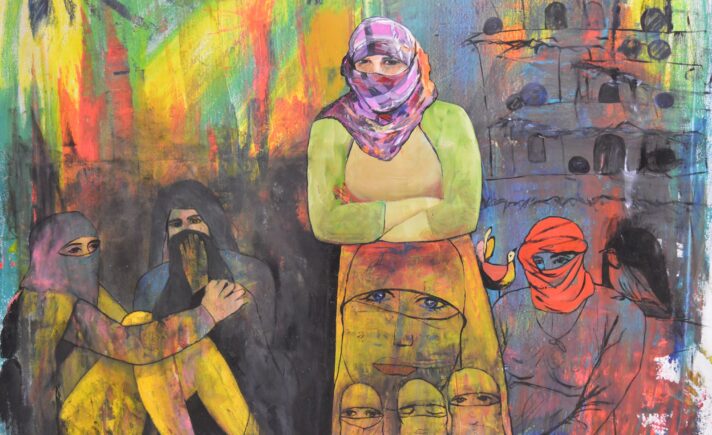The following is a review of Reconciliation in Global Context: Why it is Needed and how it Works (2018, SUNY Press), edited by Prof. Björn Krondorfer of Northern Arizona University. The three chapters analyzed below are the three that deal with Israel-Palestine. The other four, which have not been reviewed here, but which nonetheless deserve to be read and analyzed, pertain to Northern Ireland/Ireland, Zimbabwe, and the countries of the former Yugoslavia.
A group of Israeli Jews, Palestinians, and Germans met in the West Bank in 2014, and again in 2015, to engage in conversations about such difficult topics as trauma and reconciliation. In his chapter, “Interpersonal Reconciliation with Groups in Conflict: Israelis and Palestinians, Germans and Jews,” Krondorfer, who facilitated the meetings, explains how the group reached a consensus on the need to explore the issue of collective trauma together. What they did next exemplified Krondorfer’s understanding of reconciliation as not just “a mental state of a moral intention” but also a “commitment to engage with the other” and influenced the format of the meeting.
The Germans, Israelis, and Palestinians were asked to write on a card what they perceived as their collective trauma, and on two other cards what they perceived as the collective traumas of the other groups. Unsurprisingly, perhaps, the two events mentioned were the Holocaust and the Nakba. The Germans identified their own trauma as “collective guilt” because of the Third Reich, while they thought it was “anti-Semitism” for the Israelis and “the Nakba” for Palestinians. The Israelis identified “Holocaust & Hostile Environment” as their own as well as “wars” and “terrorist attacks.” They chose “Third Generation Conflict” and “Nakba & Life Under Occupation” for Germans and Palestinians, respectively. As for Palestinians, they identified “Holocaust and guilt” for the Germans and “Holocaust, rejection, victimization, fear/survival, dispossession” for the Israelis. For themselves, they wrote “Nakba, dispossession and rejection, ethnic cleansing, disempowerment, internalized inferiority, media misinterpretation/dehumanization, family fragmentation, restriction of movement.”
What is immediately obvious is that while the three groups identified the same phenomena, albeit with more or less nuance, the traumas identified by Israelis and Palestinians were clearly the ones with more immediate life and death consequences. The goal of the meeting, however, was not to place collective traumas in conflict with one another, but to instead touch “levels of affective identification.”
When I read this, I had to wonder whether this would be perceived by the Palestinian participants as a form of “normalization,” given that the primary collective trauma of Israelis was committed by Germans while the primary collective trauma of Palestinians was and still is being committed by Israelis. In other words, the Palestinians’ oppressors are still oppressing them, whereas, without diminishing the long-lasting impact of what the Germans did, Israeli Jews no longer face that threat in the same way today.
This is a particularly difficult argument to set aside, because the policies put in place by the Israeli government after the 1948 Nakba are widely seen as an extension of that very ethnic cleansing on which the state was founded in the first place, which is exactly what the Palestinian participants identified as their collective trauma. But given the current policy of the Israeli government and the overwhelming reality of the settlements in the West Bank, in addition to the brutal occupation itself, these Israelis and Palestinians likely saw no other choice than to try direct communication with non-state actors.
Once each group’s collective trauma was identified, one group sat in the middle with each of the other two groups sitting in half-circles on either end. This means that, to take the main example used by Krondorfer, the Israelis sat in the middle of the German collective trauma (Holocaust/Guilt/Third Generation Conflict) and the Palestinian one (Nakba/Life Under Occupation). They were then asked to get up and arrange themselves in relation to the other two groups. The Israelis chose to turn towards the Palestinians and turn their backs to the Germans. In the follow up session, the Israelis explained that because the Germans “were perceived as having faced the Holocaust themselves”—i.e., the Germans have since acknowledged their crimes—they (the Israelis) were “given enough space to attend to the urgency of the Palestinian plight.” Putting it differently, the Israelis were able to turn their backs to the Germans because they trusted them. It wasn’t a rejection of the European past but simply an acknowledgement of the Palestinian present.
This, unsurprisingly, did not impress the Palestinians. It should be noted here that this meeting happened on the same day (31 July, 2015) that Jewish extremists firebombed a Palestinian home in the West Bank village of Duma, killing the baby Ali Dawabsheh and severely injuring his parents (who would later die from their burns). The day before, another Jewish extremist fatally stabbed Israeli citizen Shira Banki who was participating in a pride march in Jerusalem. As participants were nervously checking their phones for news, it affected the protected space created for the purpose of this meeting. That same night some Israeli Jews went to one of the Palestinian participants’ house to walk his dog. This banal act takes on a different dimension when one remembers that what Israel calls “Area A” of the West Bank, the 18% of the territory under the control of the Palestinian Authority (PA), is forbidden (by Israel) to Israelis. They met up with other Palestinians and went to the Apartheid wall to see it for the first time from the Palestinian side.
The next and final day, the Israelis were challenged by the conveners and asked why it was so important to show that “you are good Israelis.” While initially taken aback, one of them, a young Israeli man (faced towards the Palestinians) said that his grandparents had survived Bergen-Belsen and Auschwitz and, “almost in the same breath,” expressed his desire “to understand and connect to Palestinians.” I interpreted this as him recognizing the oppression of Palestinians without the need to compare the Holocaust to the Nakba. He was pressed further and told by Krondorfer, “Instead of the wave of words and explanations, tell us what you feel.” He paused for a moment in silence and then said in a low voice, “fear… fear… fear.”
One of the Israeli women who took part in the group that went to the wall, a teacher in a Jewish school in Jerusalem for troubled teenagers, admitted that she also felt fear that night. She looked straight into one of the Palestinians’ eyes and told him that when he made several phone calls in Arabic, “I was afraid you make calls to arrange for our kidnapping, or do some other harm to us.” Upon hearing this, the Palestinian man immediately relaxed and thanked her for being honest. He said that he already knew that Israeli Jews have such fear and mistrust of them. This allowed him to see her as a human being rather than “simply a representative of Israel.”
With this in mind, we can emphasize a crucial point. Reconciliation is often misunderstood as two or more groups in conflicts suddenly believing that they are all equally guilty. But this is not what the authors of this book are arguing. A group, here Israelis, can be both oppressors and fearful. Their fears are legitimate simply because they are deeply held. This is what is very difficult about reconciliation. It is not about being accurate. To quote Bruce Edwards, “It is not necessary for the historical or popular accounts of these past events to be accurate, consistent, logical, or indisputable. What is important for the group is that the mental doubles of these traumas … are shared by all members of the group … and support the group in times of collective stress.”
In her chapter, “Reconciliation in the Midst of Strife,” the Palestinian writer Zeina M. Barakat notes that reconciliation is “being hampered by the persistence of traumatic memories and resistance to reopening wounds of the past.” She is the founder of Women for Peace and Reconciliation, which has around 2,000 Palestinian, Israeli, and international women working on “peace and reconciliation,” and so speaks not just as a Palestinian, but as a Palestinian woman. She identifies a maximalist position among Israelis who “fear that the Arab states may inflict on them the same harm that they had suffered under Nazi Germany—and hence they have developed a ‘never again’ attitude.”
There’s a lot to unpack in this statement, but let’s focus on what I believe to be the main one: the fact that there is genuine fear on the part of Israelis does not mean that their fear is justified, or that their fear justifies their actions. It is simply a recognition of what is. Palestinians like Barakat don’t have the luxury of telling themselves otherwise because Israelis use the full might of their hyper-militarized state to ensure this “never again.” Palestinians are therefore forced to see Israelis for what they are, which is why their lived experience under occupation and apartheid is so crucial to any genuine reconciliation process.
To make matters worse, this is not the most difficult obstacle to genuine reconciliation. The much more difficult one to overcome is the ongoing brutal military occupation of Palestinian territory. This is why Barakat argues that to create an environment of reconciliation, justice towards Palestinians is a must. At the same time, she argues, the lack of justice is no reason not to engage in reconciliation, which shouldn’t be confused with normalization. She cites Friedrich Hölderlin, the German poet, who argues for reconciliation in the midst of strife rather than something to be reserved exclusively to post-conflict peace-building. This “Hölderlin Perspective,” as Barakat calls it, was put in practice by the next author, Avner Dinur, an Israeli writer living in Sderot, near Gaza.
In his chapter, “No Future without a Shared Ethos: Reconciling Palestinian and Israeli Identities,” Dinur argues that reconciliation entails a common story that both Israelis and Palestinians can agree on. Dinur’s belief can be summarized by a Michael Ignatieff quote used in the chapter: “everywhere I’ve been, nationalism is most violent where the group you are defining yourself against most closely resembles you.” This is why Dinur believes that a shared ethos is possible. Palestinians and Israelis have a shared history, one which has been imposed by one group over the other. Dinur lists this shared ethos’ possible three components:
“Land: both nations share attachment and responsibility to the whole of Palestine/Land-of-Israel.
“Trauma: both nations are post-traumatic and can show empathy to the other side, based on this recognition.
“Violence: the history of violence between the warring sides needs to be rewritten for the sake of a shared ethos.”
“The whole land,” he writes, “refers to the fact that Palestinians must acknowledge the Israeli connection to Hebron and Shechem (Nablus) and Israelis must acknowledge the Palestinian connection to Jaffa and Haifa.” He continues: “the connection of both nations to the land is deeper than valuing it as real estate. It is a homeland for both: moledet (Hebrew: the place of our birth) and watan (Arabic: geographical belonging).” Trauma is something that many Palestinians and Israelis have already been working on for two or three decades. They can come in the form of Holocaust awareness projects for Palestinians or the work of Zochrot, the Israeli group that promotes Nakba awareness. The challenge would be to make these “nation”-wide, with nation here referring to the whole of Israel-Palestine.
As for violence, it is likely to be the most difficult one. What is required here is a recognition of the violence committed by the other side. Dinur is not referring here to all Israelis, but specifically to Israeli leftists, most of whom “would admit that the vast majority of the responsibility for the conflict is on the Israeli side.” Still, he says, they often ask from Palestinians to accept that they have also made wrong choices, without denying their larger share of the responsibility. They are chosen as an example to show what would be required from the “other side” (Palestinians) should Israeli society moderate its positions towards Palestinians. The hard work here is to dismantle the notion of “no other choice” but violence, especially, and for obvious reasons, on the Israeli side. But what’s even harder is for the victims to admit wrongdoing, especially in the current political climate, where any admission can invite accusations of treason or normalization while at the same time being ignored by the other side anyway.
There is no doubt that this book will leave a lot of readers in disagreement. It is inevitable given the sensitive nature of the topic of reconciliation in the first place, and especially in places where “conflict” seems far from ever ending. Still, the attempts are worth studying and the suggestions made in this book can be used by activists working in the mentioned regions and beyond.


